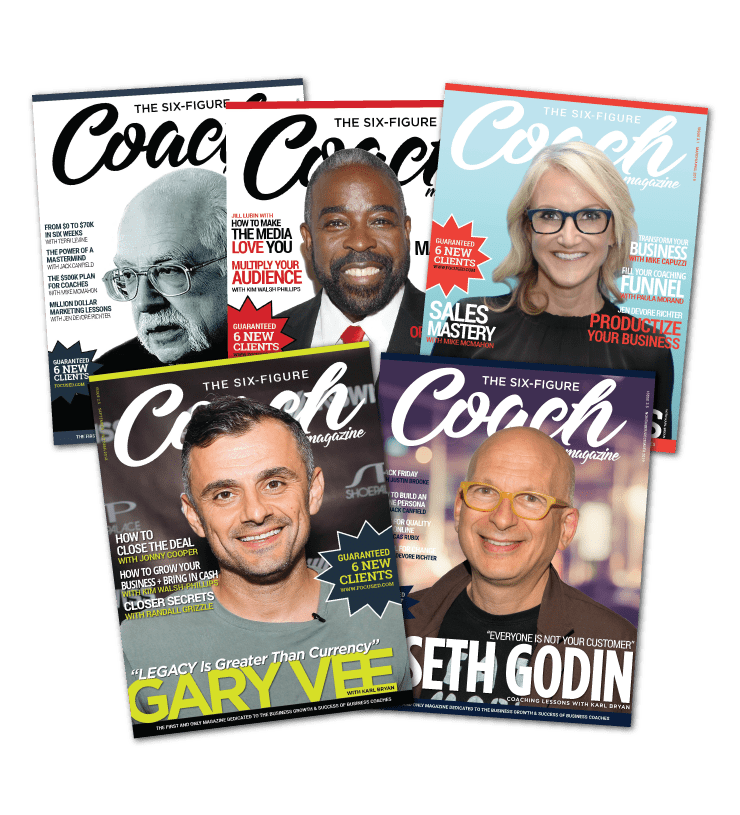How Business Coaches Can Help Clients Choose the Right Advertising Strategy

Many small business owners struggle to make advertising decisions. As a coach, you’re often asked:
“What type of advertising should I use to get the most bang for my buck?”
The truth is, there’s no one-size-fits-all answer. But when you understand the strengths and weaknesses of different advertising channels, you can help your clients avoid costly mistakes and choose the strategy that aligns with their goals, timeline, and budget.
This article focuses on two tried-and-true advertising options—magazine ads and Sunday newspaper supplements—and how to use them strategically for small business marketing.
Step One: Always Start With a Market-Dominating Message
No advertising tactic will work unless your client has a message that sets them apart from the competition. A powerful message:
-
Highlights a real, specific benefit
-
Clearly differentiates the business from others
-
Connects with a pain point or desire the target audience actually cares about
If your client’s marketing sounds like, “We offer great service and care about our customers,” they’re not going to stand out. Instead, help them craft something that sounds like:
“Unlike general business coaches who try to be everything to everyone, I specialize in helping small business owners generate leads and drive consistent revenue.”
Once you have a clear message, you can begin exploring where and how to advertise it.
Magazine Advertising: Pros and Cons
Magazine advertising is a great tool for businesses looking to reach a specific audience with a strong visual presence. But it’s not the right fit for every situation.
Pros:
-
High visual quality. Glossy paper makes images pop, ideal for showcasing physical products or visual brands.
-
Targeted distribution. Niche publications allow for precise demographic targeting—great for high-ticket or specialty offerings.
-
Long shelf life. Unlike newspapers, magazines are often kept and reread, offering more chances for exposure.
-
Detailed storytelling. Full-page layouts or inserts give space for longer copy and multiple touchpoints.
-
Creative formats. Foldouts, pop-ups, and other creative executions can be highly engaging (with a larger budget).
-
Multiple reach options. Local, regional, and national publications offer flexibility for different campaign sizes.
Cons:
-
Delayed timelines. Most publications require ad submission 2–4 months in advance. Not ideal for fast campaigns.
-
High cost per placement. Quality magazines come with premium pricing, and one-time placements rarely deliver results.
-
No interactivity. Readers must engage voluntarily—there’s no motion, sound, or urgency.
-
Limited frequency. Ads appear once per issue unless you buy a full schedule.
-
Little flexibility. Once the ad is submitted, you’re locked in. No edits, no refunds.
Best For:
-
Products or services with a strong visual element
-
Niche audiences (like luxury, health, or lifestyle)
-
Branding campaigns with long lead times
Sunday Newspaper Supplements: A Classic Local Option
Sunday newspaper inserts still offer strong local visibility, especially for consumer-facing businesses with coupons, promotions, or community appeal.
Pros:
-
High readership. People spend more time with the Sunday paper and tend to read it more thoroughly.
-
Coupon-friendly. Perfect for offers, promotions, sweepstakes, and events.
-
Immediate reach. Once printed, they’re delivered across a region or city in a single day.
-
Cost-effective production. Lower design and print costs compared to national magazines.
-
Creative flexibility. You can include samples, coupons, or special inserts.
-
Local saturation. Stronger local reach than many digital platforms.
Cons:
-
Limited lifespan. Once Sunday ends, so does the impact.
-
No motion or interaction. Print-only means limited ways to capture attention.
-
Advance deadlines. You’ll need materials finalized weeks (sometimes months) ahead of the run date.
-
Inflexible. Most inserts are nonrefundable and can’t be edited after submission.
-
Not ideal for youth markets. Younger audiences are less likely to engage with traditional print media.
Best For:
-
Restaurants, retailers, local services
-
Promotions or coupon-based campaigns
-
Community awareness efforts
Key Takeaways for Coaches Advising on Advertising
When helping your clients choose the right advertising medium, keep these principles in mind:
- Match the medium to the message. Bold visuals? Go print. Fast offer? Use digital. Local branding? Consider Sunday inserts.
- Understand the timeline. Magazine and supplement ads require planning well in advance.
- Help clients budget for frequency. One ad almost never works. Recommend a strategy, not a shot in the dark.
- Use advertising to support—not replace—core lead generation. No ad can overcome a weak value proposition or unclear messaging.
- Track and test. Help your clients measure results. If no one redeems a coupon or visits a page, adjust accordingly.
Coming Up Next: How to Compare Advertising Channels and Choose the Right Mix
In the next article, we’ll break down all major advertising platforms—from digital and print to radio and outdoor—and show you how to help your clients build a balanced, ROI-driven ad strategy.
Stay tuned.

About Adrian Ulsh
Adrian Ulsh is the CEO for Leader Publishing Worldwide, the largest online provider of coaching services worldwide. Adrian currently works with more than 500 coaches in 24 countries advising them on building 6 and 7 figure coaching practices.


